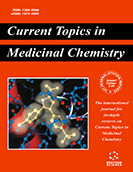Abstract
Signaling through protein kinases is an evolutionary conserved, widespread language of biological regulation. The eukaryotic type serine-threonine protein kinases (STPKs) found in normal human microbiote and in pathogenic bacteria play a key role in regulation of microbial survival, virulence and pathogenicity. Therefore, down-regulation of bacterial STPKs emerges as an attractive approach to cure infections. In this review we focused on actinobacterial STPKs to demonstrate that these enzymes can be used for crystal structure studies, modeling of 3D structure, construction of test systems and design of novel chemical libraries of low molecular weight inhibitors. In particular, the prototypic pharmacological antagonists of Mycobacterium tuberculosis STPKs are perspective for development of a novel generation of drugs to combat the socially important disease. These inhibitors may modulate both actinobacterial and host STPKs and trigger programmed death of pathogenic bacteria.
Keywords: Bacteria, Mycobacterium tuberculosis, protein kinases, classification of kinases, aminoglycoside phosphotransferase VIII, drug targets, protein kinase inhibitors, bis-indolylmaleimide, test systems, STPKs, virulence and pathogenicity, programmed death
Current Topics in Medicinal Chemistry
Title: Bacterial Eukaryotic Type Serine-Threonine Protein Kinases: From Structural Biology to Targeted Anti-Infective Drug Design
Volume: 11 Issue: 11
Author(s): Valery N. Danilenko, Dmitry I. Osolodkin, Sergey A. Lakatosh, Maria N. Preobrazhenskaya and Alexander A. Shtil
Affiliation:
Keywords: Bacteria, Mycobacterium tuberculosis, protein kinases, classification of kinases, aminoglycoside phosphotransferase VIII, drug targets, protein kinase inhibitors, bis-indolylmaleimide, test systems, STPKs, virulence and pathogenicity, programmed death
Abstract: Signaling through protein kinases is an evolutionary conserved, widespread language of biological regulation. The eukaryotic type serine-threonine protein kinases (STPKs) found in normal human microbiote and in pathogenic bacteria play a key role in regulation of microbial survival, virulence and pathogenicity. Therefore, down-regulation of bacterial STPKs emerges as an attractive approach to cure infections. In this review we focused on actinobacterial STPKs to demonstrate that these enzymes can be used for crystal structure studies, modeling of 3D structure, construction of test systems and design of novel chemical libraries of low molecular weight inhibitors. In particular, the prototypic pharmacological antagonists of Mycobacterium tuberculosis STPKs are perspective for development of a novel generation of drugs to combat the socially important disease. These inhibitors may modulate both actinobacterial and host STPKs and trigger programmed death of pathogenic bacteria.
Export Options
About this article
Cite this article as:
N. Danilenko Valery, I. Osolodkin Dmitry, A. Lakatosh Sergey, N. Preobrazhenskaya Maria and A. Shtil Alexander, Bacterial Eukaryotic Type Serine-Threonine Protein Kinases: From Structural Biology to Targeted Anti-Infective Drug Design, Current Topics in Medicinal Chemistry 2011; 11 (11) . https://dx.doi.org/10.2174/156802611795589566
| DOI https://dx.doi.org/10.2174/156802611795589566 |
Print ISSN 1568-0266 |
| Publisher Name Bentham Science Publisher |
Online ISSN 1873-4294 |
 19
19
- Author Guidelines
- Graphical Abstracts
- Fabricating and Stating False Information
- Research Misconduct
- Post Publication Discussions and Corrections
- Publishing Ethics and Rectitude
- Increase Visibility of Your Article
- Archiving Policies
- Peer Review Workflow
- Order Your Article Before Print
- Promote Your Article
- Manuscript Transfer Facility
- Editorial Policies
- Allegations from Whistleblowers
- Announcements
Related Articles
-
Globalization of Clinical Trials – Where are We Heading?
Current Clinical Pharmacology Comparison of Protease Inhibitor (PI) Resistance-Associated Mutations Between PI-Naive and PI-Experienced HIV-1 Infected Patients in Thailand Where Subtype A/E is Predominant
Current HIV Research New Preparative Approaches for Micro and Nano Drug Delivery Carriers
Current Drug Delivery Meet Our Editorial Board Member:
Current Medicinal Chemistry Crystal Structure of a Flavin-dependent Thymidylate Synthase from Helicobacter pylori strain 26695
Protein & Peptide Letters A QSAR Study of Biphenyl Analogues of 2-Nitroimidazo-[2, 1-b] [1, 3] - oxazines as Antitubercular Agents Using Genetic Function Approximation
Medicinal Chemistry All in the Family: The TNF-TNFR Superfamily in the Pathogenesis and Treatment of Rheumatoid Arthritis and other Inflammatory Diseases
Current Medicinal Chemistry - Anti-Inflammatory & Anti-Allergy Agents Glycan Phosphorylases in Multi-Enzyme Synthetic Processes
Protein & Peptide Letters Novel Antiinflammatory and Antiinfective Agents
Anti-Infective Agents in Medicinal Chemistry Antimicrobial and Biofilm Inhibiting Diketopiperazines
Current Medicinal Chemistry KEMREP: A New Qualitative Method for the Assessment of an Analyst’s Ability to Generate a Metabolomics Data Matrix by Gas Chromatography– Mass Spectrometry
Current Metabolomics Privileged Structures in the Design of Potential Drug Candidates for Neglected Diseases
Current Medicinal Chemistry Comparison of Large Proteomic Datasets
Current Proteomics Advances in Mycobacterial Isocitrate Lyase Targeting and Inhibitors
Current Medicinal Chemistry A New Battlefield Towards Global Health in 21<sup>st</sup> Century: Clinical Research Networks
Applied Clinical Research, Clinical Trials and Regulatory Affairs Gene Therapy for Chronic Granulomatous Disease: Current Status and Future Perspectives
Current Gene Therapy Current Research Issues in the Pharmacokinetics of Antiretroviral Drugs in Children
Current Pediatric Reviews Systemic Inflammation, Infection, ApoE Alleles, and Alzheimer Disease: A Position Paper
Current Alzheimer Research Bedaquiline: A New Hope to Treat Multi-Drug Resistant Tuberculosis
Current Topics in Medicinal Chemistry Inebilizumab-cdon: USFDA Approved for the Treatment of NMOSD (Neuromyelitis Optica Spectrum Disorder)
Current Drug Discovery Technologies


























